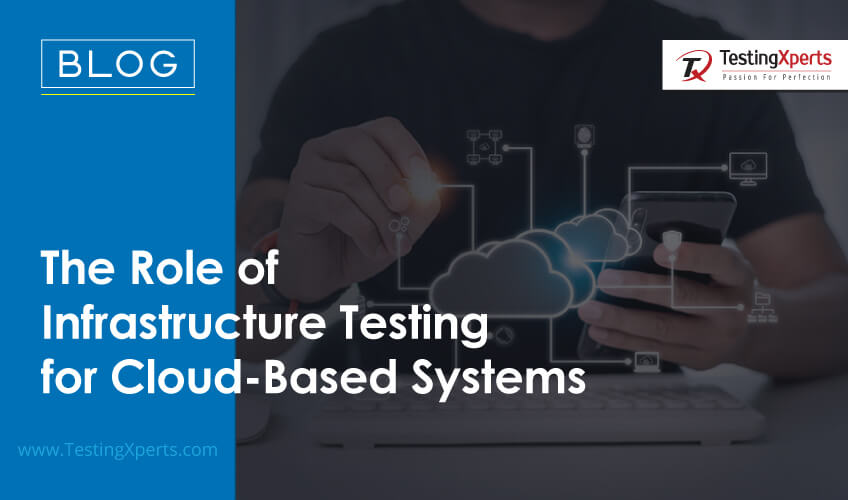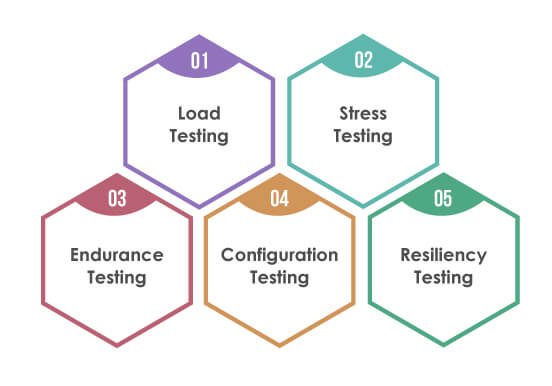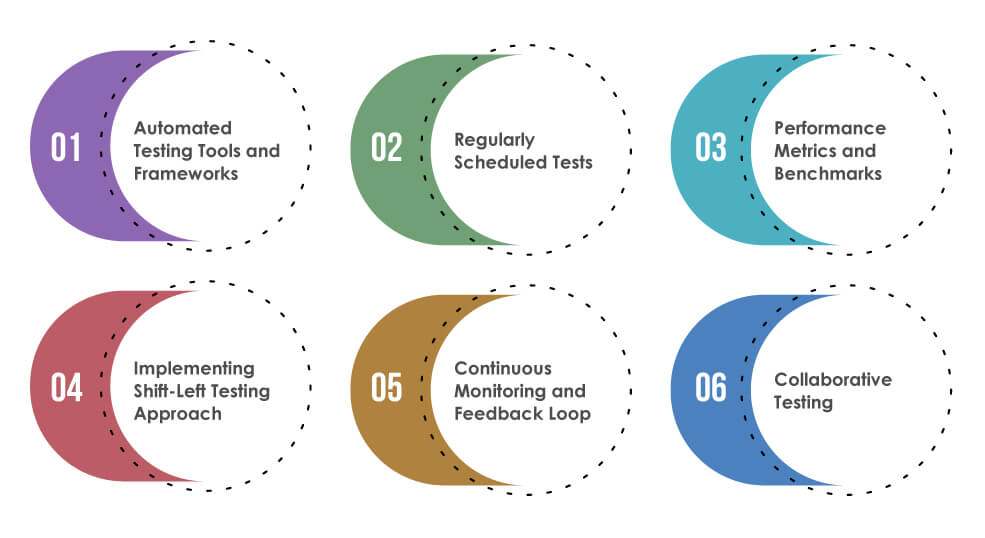Recommended Blogs
The Role of Infrastructure Testing for Cloud-Based Systems

Contents
- Understanding Infrastructure Testing
- Why Infrastructure Testing is Essential for Cloud-Based Systems?
- Types of Infrastructure Testing for Cloud-Based Systems
- Challenges in Infrastructure Testing for Cloud Environments
- Best Practices for Effective Infrastructure Testing
- Conclusion
- How TestingXperts can help with infrastructure testing?
In recent years, the adoption of cloud-based systems has skyrocketed. According to Gartner, 51% of IT spending will shift from traditional solutions to the public cloud by 2025. This rapid migration to cloud platforms is driven due to its scalability, cost-efficiency, and adaptability.
However, with this vast migration comes a wide range of challenges. As organizations become increasingly dependent on cloud systems, ensuring their reliability, performance, and security becomes necessary. This is where infrastructure testing comes into play.
It acts as a safety net, identifying potential vulnerabilities and performance issues before they escalate into costly downtimes or breaches. Infrastructure testing isn’t just a best practice in a competitive business landscape where even minor system failures can result in significant revenue losses. It’s a necessity.
Ensuring cloud systems’ functionality and robustness through rigorous infrastructure testing boosts operational efficiency and instills confidence among stakeholders and customers. When cloud systems are tested and validated, companies can better guarantee their service commitments, enabling trust in digital reliability.
Understanding Infrastructure Testing
As cloud-based systems become the backbone of modern businesses, the need for specialized testing is also growing. Infrastructure testing is one of the primary methods to ensure these systems are operational and optimized for peak performance.
At its core, infrastructure testing evaluates the entire ecosystem where an application resides. It assesses the software and the underlying systems, such as servers, databases, networks, and other critical components. The primary goal is to validate that the infrastructure can handle the application’s demands, ensuring availability, performance, and security. This involves checking system configurations, ensuring proper network communication, and validating that resources like storage and bandwidth are sufficient and functioning correctly.
How Does it Differ from Other Testing Methods?
While numerous testing methodologies exist in the software domain, infrastructure testing stands out in its focus and scope.
Here’s how it differs:
• Functional Testing primarily targets an application’s features to ensure they work as intended. It doesn’t delve deep into the integrated systems.
• Performance Testing evaluates how an application behaves under load, but infrastructure testing assesses if the infrastructure can support that load efficiently.
• Security Testing inspects applications for vulnerabilities, while infrastructure testing ensures the entire environment is secure against potential threats.
• Usability Testing examines the user experience, far removed from infrastructure concerns and configurations.
• Infrastructure testing assesses the underlying infrastructure components that support the application. It ensures the reliability, scalability, and performance of the infrastructure elements.
Why Infrastructure Testing is Essential for Cloud-Based Systems?
As businesses become increasingly dependent on cloud technologies, ensuring the stability and efficiency of these platforms becomes crucial. Infrastructure testing ensures that cloud systems are operational and excel in their performance. But why is it so essential for cloud-based systems? Let’s look into its critical contributions:

Ensuring System Scalability
One of the main aspects of cloud-based systems is their ability to scale. As businesses grow, their infrastructure needs expand, and the cloud promises to grow with them seamlessly. Infrastructure testing assesses whether the cloud environment can handle increased demands, from a surge in user traffic to larger data processing needs. By stimulating growth scenarios, infrastructure testing provides insights into how the system will respond, allowing businesses to anticipate and plan for future expansion.
Identifying Infrastructure Bottlenecks
No matter how well-designed, every system can have weak points or bottlenecks that hinder performance. In cloud systems, these bottlenecks could stem from multiple sources, such as insufficient memory allocation, inadequate network bandwidth, or misconfigured servers. Infrastructure testing actively seeks out these pain points. By identifying them early, businesses can address these issues head-on, ensuring smoother and more efficient operations.
Guaranteeing Performance Under Load
Cloud-based systems, especially those serving a vast clientele, experience fluctuating traffic and usage patterns. Peak times can see a surge in user activity, placing immense stress on the infrastructure. Infrastructure testing simulates these high-load scenarios, testing the system’s performance under pressure. This ensures the cloud infrastructure remains resilient even during peak usage, maintaining swift response times and consistent performance.
Types of Infrastructure Testing for Cloud-Based Systems
Infrastructure testing is not a single task but a collection of specialized test types, each addressing unique aspects of a cloud system’s performance and reliability. Understanding these specific test types is vital for a comprehensive assessment as cloud environments become more complex. Let’s look into the primary categories of infrastructure testing tailored for cloud-based systems:

Load Testing
It simulates real-world usage of a system, focusing on understanding how it behaves under anticipated peak load conditions. This means simulating thousands or even millions of users accessing the platform simultaneously for cloud-based systems. The primary goal is to identify the system’s breaking point, ensuring it can handle expected traffic without sacrificing speed or functionality. Load testing clearly shows the system’s capacity and ensures it meets business requirements.
Stress Testing
While load testing examines performance under expected peak conditions, stress testing pushes the system beyond its limits. It’s about determining the system’s robustness when subjected to conditions beyond its specifications. By bombarding the cloud infrastructure with overwhelming data or requests, stress testing identifies weak points and potential points of failure. It provides insights into system behavior under extreme circumstances and helps businesses prepare for unprecedented spikes in usage.
Endurance Testing
Often called soak testing, endurance testing evaluates the cloud system’s performance over extended periods under consistent load. It’s crucial for detecting issues like memory leaks or resource degradation that might only become evident after prolonged usage. By maintaining a consistent load over time, endurance testing ensures that the cloud infrastructure can sustain its performance, even with continuous, long-term demand.
Configuration Testing
Cloud environments are dynamic, with various configurations based on user needs and system demands. Configuration testing examines how the system performs under different setups and environments. This could involve testing different server configurations, database setups, or network conditions. The aim is to ensure that irrespective of how the cloud environment is configured, it remains stable, secure, and efficient.
Resiliency Testing
This testing methodology specifically assesses the system’s ability to recover and maintain functionality in the face of various disruptions, such as network failures, hardware issues, or unexpected spikes in user traffic. Resiliency testing for cloud-based systems involves simulating adverse conditions and evaluating how well the infrastructure responds, identifying potential weak points or vulnerabilities.
By deliberately introducing failures and measuring the system’s recovery time and ability to continue delivering services, organizations can proactively enhance their cloud infrastructure’s resilience, minimize downtime, and optimize overall performance, thereby ensuring a resilient and dependable cloud-based ecosystem for their applications.
Challenges in Infrastructure Testing for Cloud Environments
While infrastructure testing is vital for cloud environments, it doesn’t come without complexities. Cloud systems’ dynamic and evolving nature presents testers with unique challenges that demand innovative solutions. Let’s look into some of these pressing concerns:

Integration with Legacy Systems
Many businesses transitioning to the cloud still rely on legacy systems for certain operations. Ensuring seamless integration between these older systems and modern cloud platforms is crucial. Testers face the task of ensuring that these integrations don’t introduce vulnerabilities or performance bottlenecks.
Data Security and Privacy Concerns
With scaling concerns over data breaches and privacy regulations, data security in the cloud is necessary. Infrastructure testing must validate that data storage, transmission, and processing adheres to strict security protocols, especially in multi-tenant environments.
Continuous Deployment and Integration Challenges
The cloud’s agile nature promotes continuous deployment and integration practices. While this accelerates development cycles, it also means that infrastructure is continuously evolving. Testers must keep pace, ensuring new integrations or deployments don’t introduce unforeseen vulnerabilities or disrupt existing functionalities. To manage this effectively, teams can utilize cloud infrastructure automation to streamline updates, reduce human error, and maintain consistent testing environments.
Multi-tenancy Concerns
Cloud platforms often host multiple clients on shared resources, a model known as multi-tenancy. This brings concerns about data leaks between users and resource conflicts. Testing in such environments requires extra diligence to ensure that one user’s activities don’t inadvertently impact another, safeguarding data integrity and system performance.
Dynamic Resource Allocation
Cloud systems dynamically allocate resources based on demand. While this ensures optimal utilization, it poses a challenge for testers. Since resource allocation can change in real time, testers must devise strategies to verify that the system functions effectively under various resource scenarios, ensuring consistency amidst dynamism.
Testing in Virtualized Environments
Cloud platforms heavily rely on virtualization, allowing multiple virtual instances on a single physical server. Testing in such environments is challenging due to the abstraction layer between the hardware and virtual instances. It demands tools and approaches tailored to validate performance, security, and interoperability in virtualized contexts.
Best Practices for Effective Infrastructure Testing
While crucial for cloud environments, infrastructure testing can be complex. However, by implementing certain best practices, businesses can resolve this complexity, ensuring thorough and efficient evaluations. Let’s explore these practices to streamline infrastructure testing for cloud platforms.

Automated Testing Tools and Frameworks
In the dynamic world of cloud computing, manual testing can be time-consuming and prone to errors. Automated testing tools and frameworks can offer consistent, repeatable tests that quickly identify vulnerabilities or performance issues. Businesses can streamline their testing cycles by automating test cases, ensuring rapid feedback and faster time-to-market.
Regularly Scheduled Test
The cloud environment is ever-evolving, with frequent updates and changes. This necessitates regularly scheduled tests. By setting up consistent testing intervals, whether daily, weekly, or monthly, businesses can stay ahead of potential issues, ensuring the system’s stability and reliability over time.
Performance Metrics and Benchmarks
Assessing test results can be unclear without precise metrics and benchmarks. Defining specific performance metrics like response times, throughput, and error rates is vital. Established benchmarks allow testers to compare results over time, spotting trends and identifying areas of concern or improvement.
Implementing Shift-Left Testing Approach
Shift-left testing emphasizes integrating testing early in the development lifecycle. Instead of waiting until the end, testers collaborate with developers, identifying and addressing issues sooner. This proactive approach not only reduces defect density but also accelerates delivery cycles.
Continuous Monitoring and Feedback Loop
Infrastructure testing shouldn’t be a one-off task. Continuous monitoring tools provide real-time insights into system performance, identifying errors as they arise. By integrating a feedback loop, developers and testers can collaboratively address issues, refining the system based on real-world performance data.
Collaborative Testing
Modern cloud platforms often integrate with DevOps, emphasizing collaboration between development and operations teams. Integrating testing into this collaborative model ensures that infrastructure considerations are highlighted throughout the development and deployment. This approach facilitates shared responsibility, where both teams collaborate to optimize the cloud environment.
Conclusion
The growth of cloud systems will undoubtedly bring new challenges and issues. As technologies like edge computing, 5G, and artificial intelligence become more common in cloud platforms, the details of infrastructure testing will change and expand. Organizations must keep up with these changes, putting money and effort into training, tools, and methods that fit upcoming needs. However, the need for thorough infrastructure testing will only grow, making it a crucial part of strong cloud systems.
How TestingXperts can help with infrastructure testing?
Making the right choice in a QA partner can lead to smoother operations, reduced risks, and enhanced customer satisfaction.
Here’s why TestingXperts stands out among QA providers:
• Our team consists of expert QA professionals familiar with the complexities of evolving cloud technologies.
• Each cloud system has unique requirements. TestingXperts customizes testing strategies to ensure precise and optimal outcomes.
• We utilize the latest testing tools and technologies, ensuring your systems are evaluated with industry-leading methods.
• Our processes prioritize clear communication, ensuring you’re informed at every step and promoting trust and collaboration.
• We focus on delivering timely results, ensuring your systems are ready when needed.
To know more about infrastructure testing services for cloud-based systems, contact our QA experts now.
Discover more
Stay Updated
Subscribe for more info
